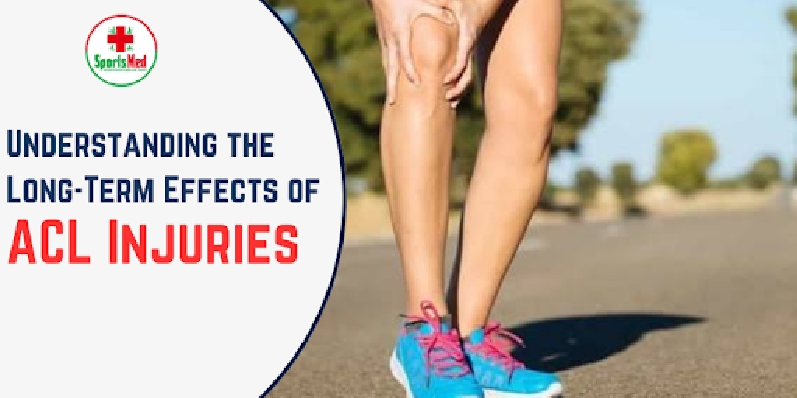
Understanding the Long-Term Effects of ACL Injuries
Introduction
Anterior Cruciate Ligament (ACL) injuries are among the most common sports-related injuries, particularly in activities involving jumping, cutting, or rapid direction changes, such as soccer, basketball, and skiing. While immediate treatment and rehabilitation can facilitate recovery, many athletes and individuals are often left wondering about the long-term effects of these injuries. Understanding these effects is crucial for managing expectations and making informed decisions about future activities and treatments.
What is an ACL Injury?
One of the important ligaments that aids in stabilizing the knee joint is the ACL. It connects the thigh bone (femur) to the shin bone (tibia) and plays a vital role in knee stability and mobility. An ACL injury typically occurs due to trauma, often resulting from sudden stops or changes in direction, direct blows to the knee, or awkward landings after jumps.
Short-Term Recovery vs. Long-Term Consequences
After an ACL injury, the immediate focus is on pain management, swelling reduction, and restoring mobility through rehabilitation. However, it's essential to consider the potential long-term effects, which may include:
-
Chronic Knee Instability
-
One of the most common long-term consequences of ACL injuries is persistent knee instability. Many individuals report a feeling of their knee giving way, which can hinder participation in sports and daily activities. This instability can result from inadequate healing or failure to fully rehabilitate the knee.
-
-
Osteoarthritis Development
-
Studies have shown that individuals with ACL injuries are at a higher risk of developing osteoarthritis (OA) in the affected knee, even years after the injury. The loss of cartilage and changes in joint mechanics can lead to increased wear and tear, ultimately resulting in pain, stiffness, and reduced mobility.
-
-
Increased Risk of Re-injury
-
Athletes who have suffered an ACL injury face a heightened risk of re-injury, whether to the same knee or the opposite one. This risk can be attributed to factors such as psychological readiness, muscle strength, and movement mechanics that may not be fully restored during rehabilitation.
-
-
Altered Biomechanics
-
Following an ACL injury, individuals may unconsciously alter their movement patterns to compensate for pain or instability. This change in biomechanics can place undue stress on other joints and muscles, leading to overuse injuries in the hips, ankles, or lower back.
-
-
Psychological Effects
-
The impact of an ACL injury extends beyond physical limitations. Many athletes experience anxiety, fear of re-injury, or loss of confidence in their abilities. These psychological effects can affect their willingness to return to their sport or engage in physical activities.
-
Preventative Measures and Rehabilitation
Understanding the long-term effects of ACL injuries emphasises the importance of prevention and comprehensive rehabilitation. Key strategies include:
-
Strengthening Exercises: Focus on building strength in the muscles surrounding the knee, particularly the quadriceps and hamstrings, to enhance stability and support.
-
Balance and Coordination Training: Implement exercises that improve proprioception and balance, reducing the risk of falls and further injuries.
-
Sport-Specific Drills: Incorporate drills that mimic the movements of the sport to prepare the knee for the specific demands it will face.
-
Education and Awareness: Athletes and coaches should be educated about the risks associated with ACL injuries and the importance of proper warm-up, stretching, and conditioning.
Conclusion
ACL injuries can have significant long-term effects that extend beyond the initial injury. Awareness of these potential consequences is vital for athletes, coaches, and medical professionals to make informed decisions regarding treatment, rehabilitation, and return-to-sport protocols. With proper preventative measures and rehabilitation strategies, individuals can minimise the risk of long-term complications and continue to enjoy an active lifestyle.